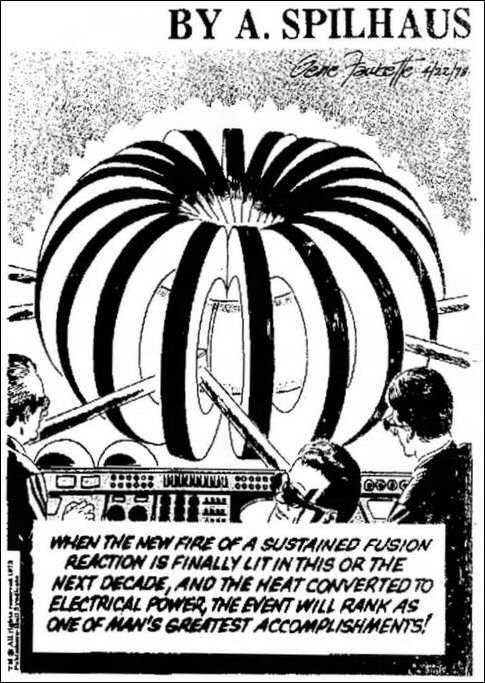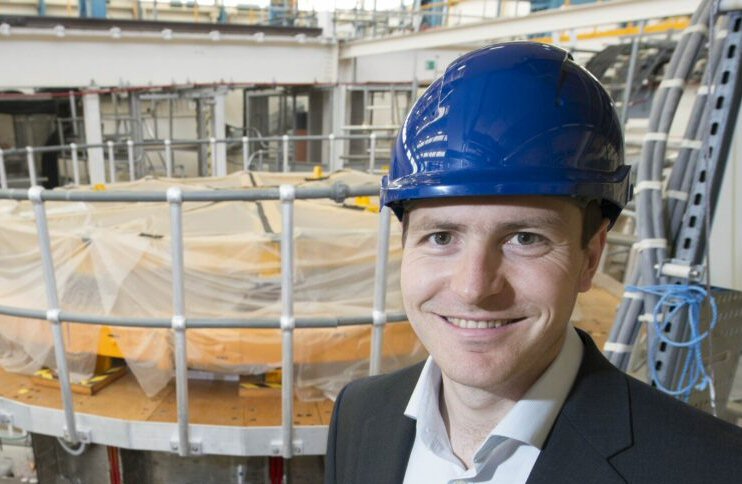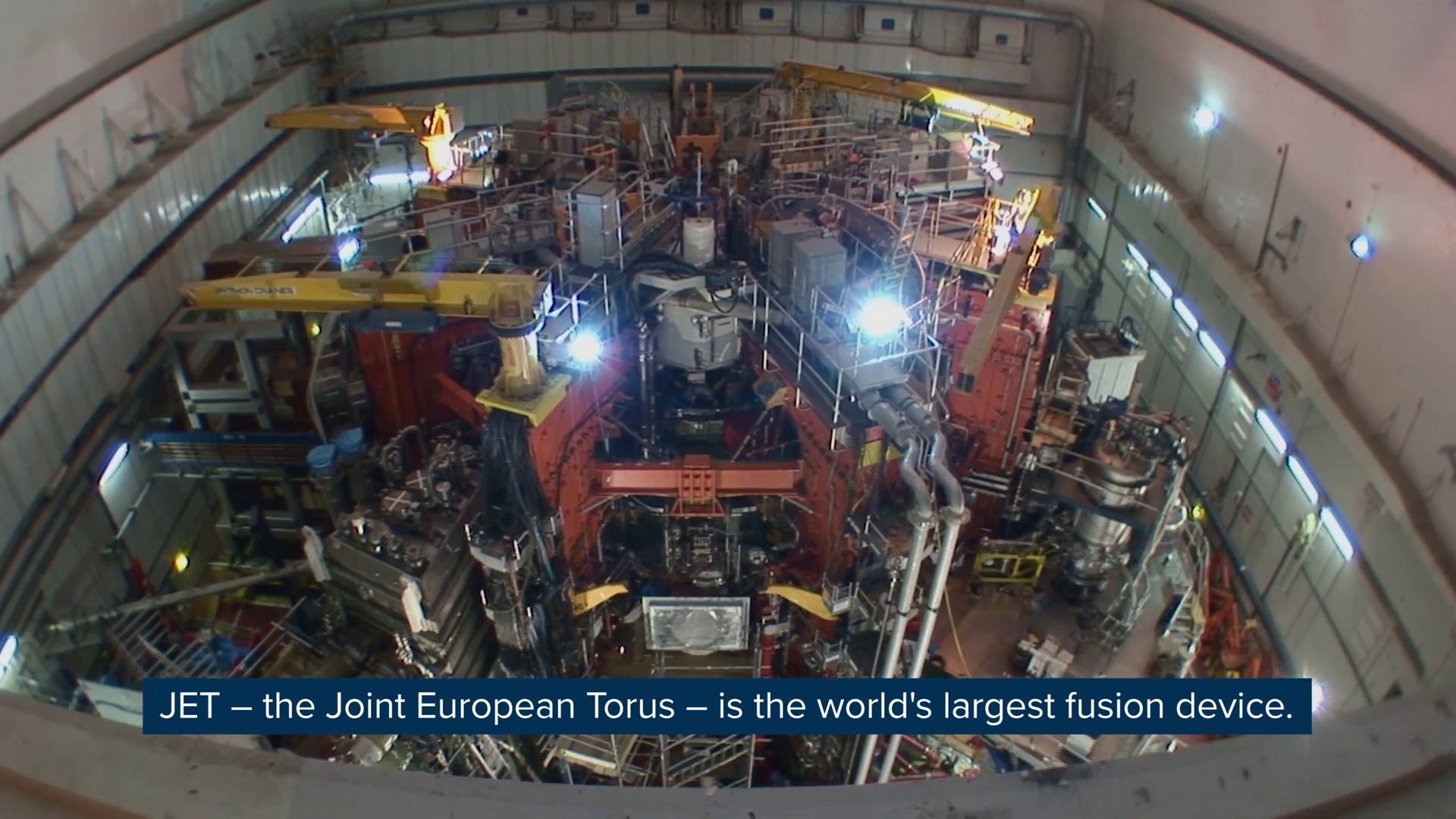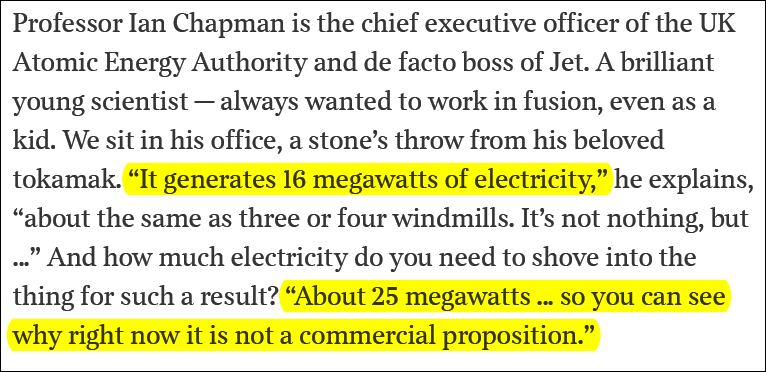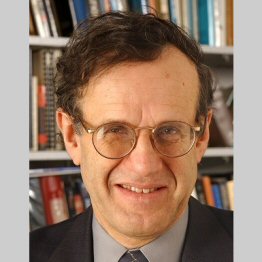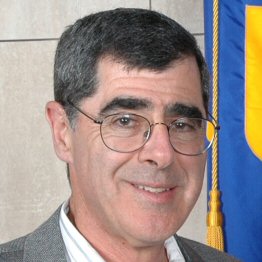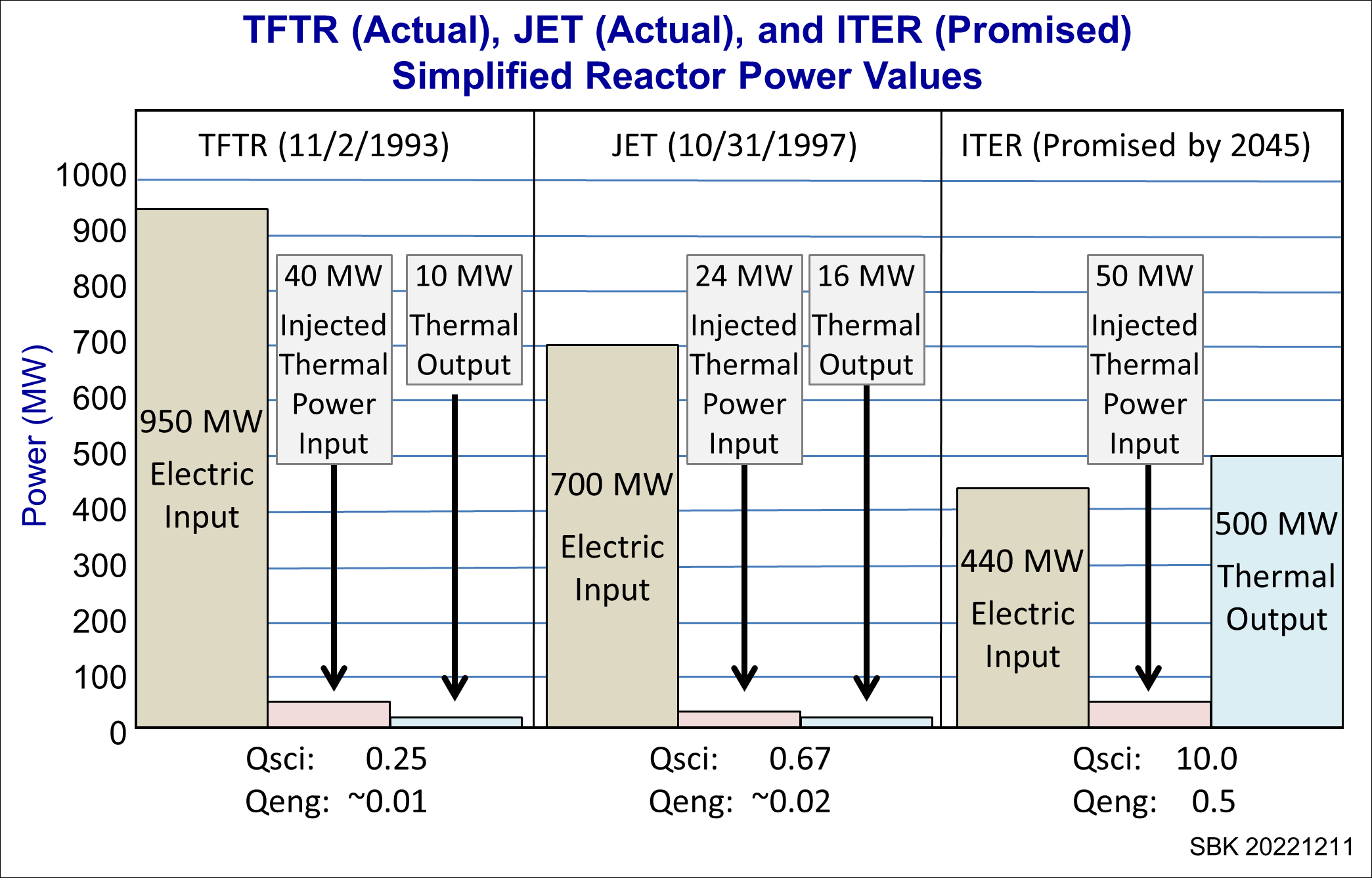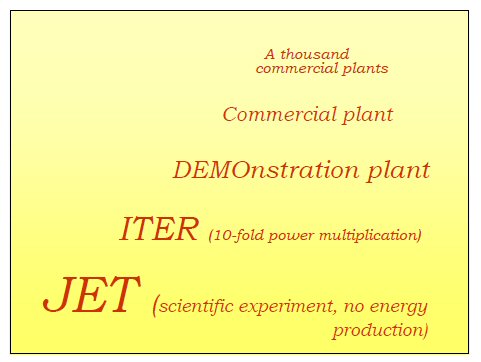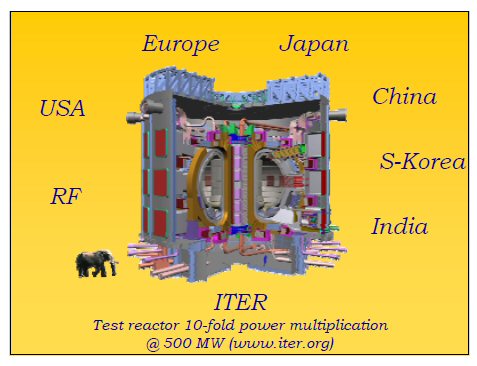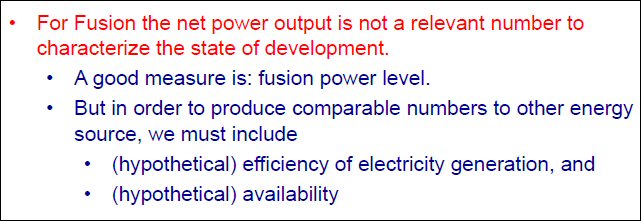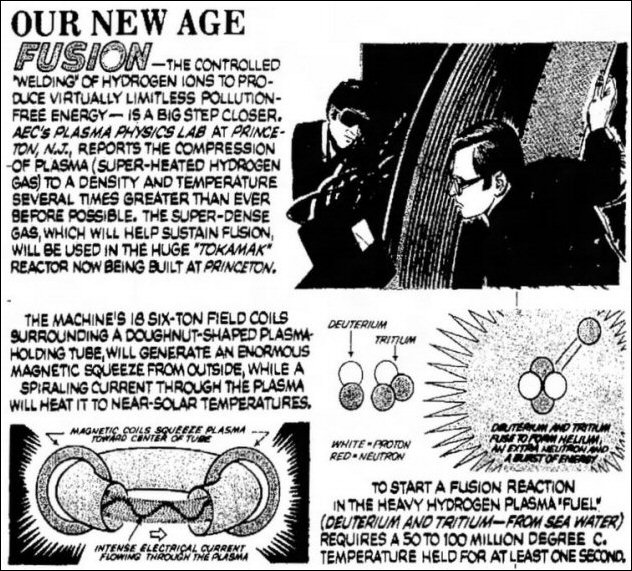
Return to ITER Power Facts Main Page
By Steven B. Krivit
Oct. 24, 2020
New Scientist magazine is the singular best archival tool to examine fusion progress and promises in the early decades of the research field. This is because no other news organization has more consistently chronicled the development of thermonuclear fusion research. New Energy Times examined every issue of New Scientist magazine through 1986, the inception of ITER, the International Thermonuclear Experimental Reactor. At that time, a broader group of news organizations began paying attention to fusion research, and those news stories are more readily available.
The following excerpts are representative of New Scientist articles that mention fusion research, with a focus on progress and promises.
“Can We Get Power From Nuclear Fusion?” by Tom Margerison, New Scientist, Jan. 24, 1957
“The sun and stars derive their energy from fusing small items to make larger ones. Harwell scientists published this week six reports on their attempt to build a synthetic sun for generating power.”
“Thermonuclear Fusion: The Task and the Triumph,” by Sir George Thomson, New Scientist, Jan. 30, 1958
“The secret of the Harwell success with Zeta (zero energy thermonuclear assembly) is the stabilizing of the current at least partially by another magnetic field supplied by a current in coils outside the torus. … It is clear that there is a long way to go, from 5 million to about 500 million degrees, before one can make a power station out of Zeta. ”
“The Next Stages With Zeta,” by Sir John Cockcroft, New Scientist, Jan. 30, 1958
“In the small controlled nuclear fusion experiments conducted so far, the energy produced is small compared with the energy input. Vastly higher temperatures and new techniques will be required before the stage of commercial application can be reached.
“It has long been the ambition of scientists to emulate the sun by making use of reactions between the light elements to release energy for practical applications. Papers published in Nature (January 25) describe a first stage of experimental work carried out at Harwell, AEI Research Laboratories, Aldermaston, and Los Alamos, USA, with this long-term objective.
“We will have many problems to face in this second stage. New methods may have to be devised to heat the gas to higher temperatures, and new techniques will be required to measure the temperatures. Even if all goes well and we meet no roadblocks, we would still have the further engineering problem of designing and constructing a prototype of a practical and economic thermonuclear power station. This would be stage III, and after that, there would be stage IV, commercial application.”
“What I Saw in Russia,” by Sir John Cockcroft, New Scientist, Dec. 4, 1958
“Soviet scientists are working on many different lines towards controlled fusion. Resources of men, materials and money are ample. Strides in technology generally are due to the great post-war development of scientific education.”
“The Latest Steps Towards Fusion Power,” by Peter Stubbs, New Scientist, May 2, 1963
“Present efforts fall far short of maintaining relatively dense gas at the necessary high temperatures for long enough to obtain a useful power.”
“Time to End the Thermonuclear Confusion,” by Michael Kenward, New Scientist, October 12, 1972
“The United Kingdom Atomic Energy Authority’s Culham laboratory for fusion research and plasma physics has waited too long for a decision on the future of the controlled thermonuclear power program in Britain.”
“Intense Electron Beams — a Fusion Match?” By James Benford and Gregory Benford, New Scientist, November 30, 1972
“With the problems of confining the thermonuclear plasma looking less insuperable, fusion scientists are now tackling some of the other obstacles that stand between them and a commercial fusion reactor. One problem is how to heat up the plasma to a high enough temperature.
“An economical fusion reactor must trap a hot, dense plasma of light nuclei long enough for the nuclei to react. The aim is to sustain the reaction so that more energy is produced by fusion that is used to set up the containment system.”
“Modest Reprieve for U.K. Fusion Research,” by Michael Kenward, New Scientist, March 29, 1973
“After five years in the doldrums, Britain’s fusion researchers were last week given the go-ahead to spend more money and to build a big new machine. But the government’s decision to improve the status of the fusion program is not as progressive as it might seem.
“For a long time, fusion scientists seemed only to be able to discover new drawbacks and reasons for doubting that fusion would ever provide power on earth as it does in the stars.
“Last year, the Atomic Energy Authority set up a panel under the chairmanship of Sir Harry Massey to review the program of research into controlled thermonuclear fusion as a means of generating electricity.
“Until very recently, the magnitude of the plasma physics barriers between existing experiments and an electricity-producing system has seemed so great that no one really paid much attention to reactor problems.”
“America’s Fusion Director,” by Norman Metzger, New Scientist, April 12, 1973
“Dr. Robert Hirsch, at 38 the youngest man to direct the U.S.-controlled thermonuclear research program, adopts a strictly pragmatic approach to the dizzying problems of plasma physics which the program involves.
“The chart gives timetables and interrelationships among fusion projects underway or planned for the future, topped by the now-formal goal of scientific feasibility by 1980-1982.
“The PLT is now designed to be a halfway station on the road to scientific feasibility, proof that a fusion reaction can be thorough enough to provide an excess of extractable energy. However, if the PLT [Princeton Large Torus] performs to its ultimate, there is an outside chance that it may show that fusion really is feasible.
“Hirsch exudes confidence over the prospects for the current fusion program, which is rather remarkable in the light of the tortuous history of the fusion effort, marked as it is by peaks and valleys of optimism and gloom and often to the accompaniment of puzzled growls from Congressmen.”
“Fusion Reactors – the Ultimate Solution?” By Michael Kenward, New Scientist, December 27, 1973
“New technology cannot hope to have more than a minor impact on today’s energy crisis. However, controlled thermonuclear fusion could guarantee our energy supplies from the 21st century onwards. After years of rising and falling fortunes, fusion research is now making its next tentative step forward.”
“Fusion Reactors – the Ultimate Solution?” By Robert Hirsch, quoted by Michael Kenward, New Scientist, December 27, 1973
“At present, the principal program task is to demonstrate that a plasma of light nuclei can be confined at sufficient temperature and density for a long enough period of time to release more energy by means of a controlled thermonuclear fusion process than was required to create the plasma.
“Present estimates indicate that an orderly aggressive program might provide commercial fusion power about the year 2000, so that fusion could then have a significant impact on electrical power production by the year 2020.”
“Power Struggle in Fusion Research,” New Scientist, Feb. 21, 1974
“Clearly, technology will play an increasingly important role in fusion research and development as fusion approaches the marketplace — reactor design will dominate fusion research toward the end of the century. A meeting held over the past three weeks at the U.K. Atomic Energy Authority’s Culham laboratory (the home of fusion research in Britain) underlined this trend in fusion research. As the men who run the program put it: ‘Fusion is no longer a physics program, it is a power program.’ There is an increasing realization that the days of pure plasma physics are numbered.”
“Energy File,” by Christopher Parkes, New Scientist, March 4, 1976
“Last week’s EEC meeting in Brussels of the Council of Research Ministers got nowhere in the search for an acceptable site for the Joint European Torus (JET) – the proposed next step in Euratom’s fusion research program.
“Whereas Euratom’s role has previously been one of ensuring that different countries do not build identical experiments, collaboration now requires that national projects give way to international projects. This is because no country in Europe can afford to build experiments as big as JET.”
“Fusion: The Way Ahead,” by Michael Kenward, New Scientist, August 17, 1978
“Remember Zeta? Well, forget it. This week’s news that inexpensive and inexhaustible energy from seawater is just around the corner may be another instance of newspapers misunderstanding a scientific story. … At Princeton, they have made a truly significant step forward. But they haven’t solved the world’s energy crisis once and for all, and if some snags crop up over the next 30 years or so, we cannot blame the scientists for raising false hopes. If anybody is responsible for that, it is the newspapers whose muddled accounts prove, if nothing else, that there still is room for good old scientific sensationalism of the sort that was common in the 1950s.”
“Fusion Research — The Temperature Rises,” by Michael Kenward, New Scientist, May 24, 1979
“A fascinating scientific challenge that could solve all our energy problems — that is how fusion researchers see their work. Researchers have increasing confidence that the next generation of experiments will answer most of the remaining scientific questions. Then come the engineering difficulties.
“Why are fusion scientists all over the world now confident that, in just a few years’ time, they will be in a position to build a fusion reactor? The easy answer to these questions — and the one you would get from most descriptions of the fusion effort — is to say that bigger and bigger fusion experiments have brought the researchers nearer and nearer to the conditions they need to reach in a reactor.
“Neutrons generated in Zeta turned out to be produced by a process other than fusion. Even now, fusion research still has not reached the stage of proving that a fusion reactor can be built, although over the past decade, confidence has grown that one day soon there will be a thermonuclear equivalent of the Chicago pile.”
“The Challenge of Fusion,” New Scientist, March 12, 1981
“‘Fusion is very difficult. The promise is infinite, but the chance of being economic is zero.’ So says Dr. Walter Marshall, the new chairman of the United Kingdom Atomic Energy Authority, about the prospects for thermonuclear fusion.”
“Polarization Brings a New Twist to Fusion Research,” by Michael Kenward, New Scientist, September 24, 1981
“Researchers at Princeton University are now working on an experiment that will, later this year, try out a way of polarizing atoms of some of the isotopes of hydrogen.”
“Fluctuating Fortunes for Fusion Forces,” by Michael Kenward, New Scientist, September 24, 1981
“If, as is very likely, experiments finally prove the ‘scientific’ feasibility of fusion in the next few years, there will be plenty of interest in the topic.”
“Cuts Mean the End of £20 Million Fusion Project,” by Michael Kenward, New Scientist, September 24, 1981
“A £20 million experiment in fusion research has been canceled by the U.K. Atomic Energy Authority. The reversed field experiment — RFX — would have meant building a machine to look at new ways of containing the plasma within which fusion occurs. Sixty percent of the cost would have come from other countries. But cuts in the budget for fusion research and the rising cost of Europe’s collaborative fusion venture — JET — have forced the authority to ditch its plan.”
“Tough Time Ahead for Fusion, Too,” New Scientist, Jan. 21, 1982
“Ex-Congressman Mike McCormack told the American Association for the Advancement of Science that ‘the time has come for the U.S. to move into an aggressive program of magnetic fusion engineering development and materials testing.’
“McCormack thinks such a program could be as important scientifically to the U.S. as was the Apollo manned mission to the moon. Its object would be ‘building and successfully operating a magnetic fusion electric power demonstration plant by the year 2000’ at a cost of $20 billion.”
JETs Plasma Fits Fusion to a D,” New Scientist, April 29, 1982
“Over the years, tokamaks have grown, and the conditions within their plasmas have come nearer and nearer to those required for fusion reactors: both JET and TFTR expect to come very close to reactor conditions, if not to reach them.”
“Experts Back All the Runners in the Fusion Race,” by Christopher Joyce, New Scientist, September 9, 1982
“Fusion energy research in the U.S. has reached an awkward stage in its adolescence. The time is fast approaching when it must abandon the freedom to pursue novel notions at will and instead choose a single course toward a workable fusion reactor.
“Congress, in 1980, passed the Magnetic Fusion Energy Engineering Act, which called for a ‘demonstration’ fusion reactor by the end of the century. Plans were laid for a fusion engineering device (FED) halfway to a demonstration reactor. This would cost some $1 billion and would be built by about 1990. It would have been the first big step away from physics, still the focus of current work, toward the technology needed for a commercial reactor. Now, the Reagan administration’s energy advisers say the FED is too expensive and have canceled it.”
“The Shadow of Zeta,” New Scientist, January 20, 1983
“Twenty-five years ago, Zeta was heralded as proof that science had tamed the process that powers the hydrogen bomb — fusion. Cheap electricity would soon be issuing forth from reactors fed by and inexhaustible resource — seawater. It did not work out like that, and the world still awaits that scientific proof. The scientists involved blame the press and its lurid headlines for giving people the wrong impression about Zeta. But if the project’s scientists — and the intellectual giants who ran Britain’s nuclear program at the time — weren’t all that sure about the measurements, why did they call large press conferences and flood the scientific press with detailed descriptions of the work? The answer to these questions lies in the intense international rivalry to be first with fusion, a rivalry that persists to this day. ”
“Fusion Research 25 Years After Zeta,” by R. S. Pease, New Scientist, January 20, 1983
“A quarter of a century ago, the news broke that scientists had come near to taming the hydrogen bomb and turning fusion power into a source of energy for power stations. In the event, the announcement was premature; but fusion researchers have come a long way since then.
“If machines such as JET prove the scientific feasibility of fusion, there will have to be even larger machines if we are to prove fusion’s technical and economic feasibility.
“The International Atomic Energy Agency of the United Nations organizes the INTOR workshops. INTOR stands for International Tokamak Reactor, although most of the work is actually carried out by groups working in their various home laboratories. The leading groups meet Indiana periodically to bring the work together. The INTOR workshop has already produced a first broad proposal, a definition of an envisaged plant and its objectives. INTOR is presently conceived as a 600 MW (thermal) reactor that would run for 10 years, researching and, we hope, demonstrating the practicability of repeated long pulses burning thermonuclear fuel in a tokamak. … INTOR would not produce electricity, that would come later in the so-called demonstration plant.”
“Juggling With Magnetic Doughnuts,” by Michael Kenward, New Scientist, April 21, 1983
“As science gets nearer to proving that thermonuclear fusion is scientifically feasible, concern grows as to the best machine to build.”
“A Fusion of Talents,” by Michael Kenward, New Scientist, June 23, 1983
“Ignition is the stage where a tokamak’s auxiliary heating can be turned off, leaving it to the fusion reactions to produce enough energy to maintain the plasma’s temperature. [Paul-Henri] Rebut believes that JET has a 50 percent chance of achieving ignition. If JET turns out as Rebut intended, it will bring us access to an almost unlimited supply of energy.”
“Pro Fusion and Con Fusion,” by Michael Kenward, New Scientist, Oct. 4, 1984
“After three decades of research, fusion scientists are finally approaching their goal of an almost limitless energy source. But they still don’t understand all that is going on within their experiments. … There is every confidence among fusion scientist that they will fulfill the promise they made three years ago. But it could be that they will finally get their act together, to use a phrase that makes sense for a change, only when the IAEA next brings the world’s fusion community together to plot some more points on the curve of increasing [the parameters]. The fusion researchers could then begin to think about turning all this esoteric science into power stations — a task that should keep them busy for at least another quarter of a century.”
“U.S. May Give Up Independent Fusion Research,” by Christopher Joyce, New Scientist, Nov. 15, 1984
“The United States may be about to give up its race with the Europeans and Japanese to be the first to win energy from magnetic fusion. Its scientists are becoming so disillusioned with progress that they may soon opt for cooperation with their rivals rather than competition.”
“More Cuts for Fusion Research,” by Michael Kenward, New Scientist, Jan. 10, 1985
“Over the next three years, Britain’s budget for research on thermonuclear fusion will fall by around 20 percent. … The reduction in Culham’s budget comes at a time when fusion researchers are finally assembling the experimental evidence that will prove that they can produce energy by fusing the nuclei of hydrogen, to produce heavier nuclei, releasing energy in the process.”
“International Fusion on Fusion Research,” New Scientist, Jan. 30, 1986
“The International [Atomic] Energy Agency has united the U.S., Europe. and Japan. The agreement, signed recently, calls for collaboration between the teams working on the Tokamak Fusion Test Reactor at Princeton, New Jersey, the Joint European Torus, at Culham in Oxfordshire, and JT-60 in Naka-machi, Japan.”
[Ed: Fusion research funding problem solved.]
